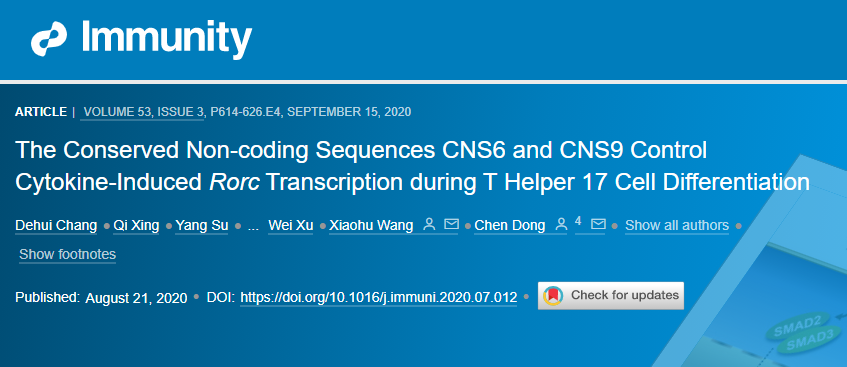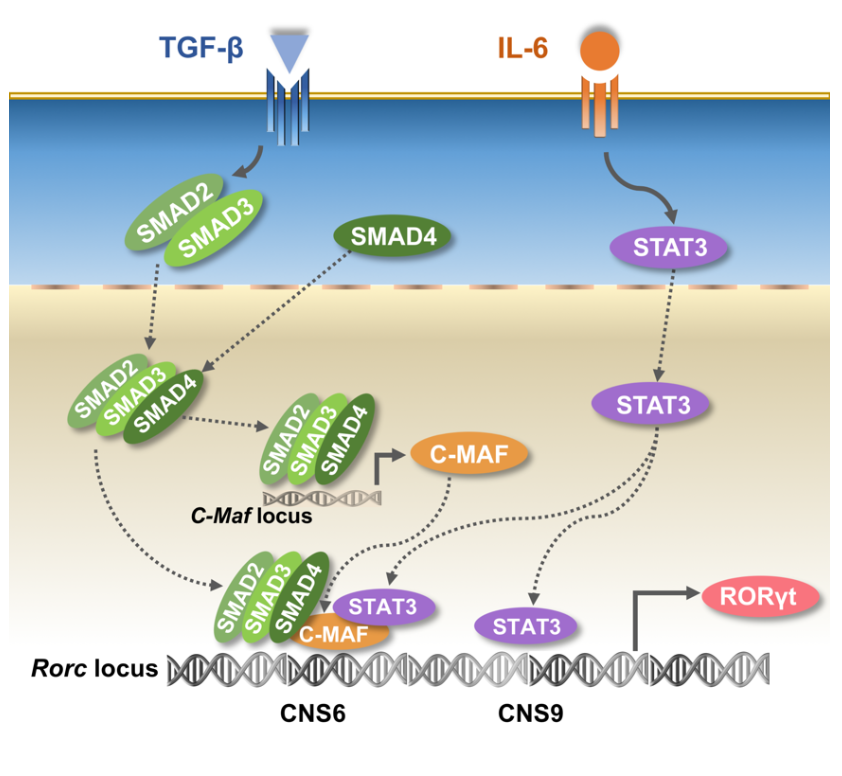
CNS6 and CNS9 are not required for RORγt expression in innate immune cells
Deficiency in CNS6 or CNS9 decreases Th17 cell differentiation and EAE disease
CNS9 and, to a lesser extent, CNS6 are required for IL-6-induced RORγt expression
CNS6, but not CNS9, is indispensable for TGF-β-induced RORγt expression
RORγt is the lineage-specific transcription factor for T helper 17 (Th17) cells whose upregulation in developing Th17 cells is critically regulated by interleukin-6 (IL-6) and TGF-β, the molecular mechanisms of which remain largely unknown. Here we identified conserved non-coding sequences (CNSs) 6 and 9 at the Rorc gene, essential for its expression during Th17 cell differentiation but not required for RORγt expression in innate lymphocytes and γδ T cells. Mechanistically, the IL-6-signal transducer and activator of transcription 3 (STAT3) axis appeared to be largely dependent on CNS9 and only partially on CNS6 in controlling RORγt expression and epigenetic activation of the Rorc locus. TGF-β alone was sufficient to induce RORγt expression in a CNS6- but not CNS9-dependent manner through CNS6 binding by SMAD proteins. Our study reveals an important synergistic mechanism downstream of IL-6 and TGF-β in regulation of RORγt expression and Th17 cell commitment via distinct cis-regulatory elements.

Link: https://www.cell.com/immunity/fulltext/S1074-7613(20)30319-8

Copyright © 2017 Institute for Immunology Tsinghua University
Contact Address: Room D302, Medical Science Building, Tsinghua University, Beijing 100084, China
Tel: (86) 10-62776420 Fax: (86) 10-62776420
